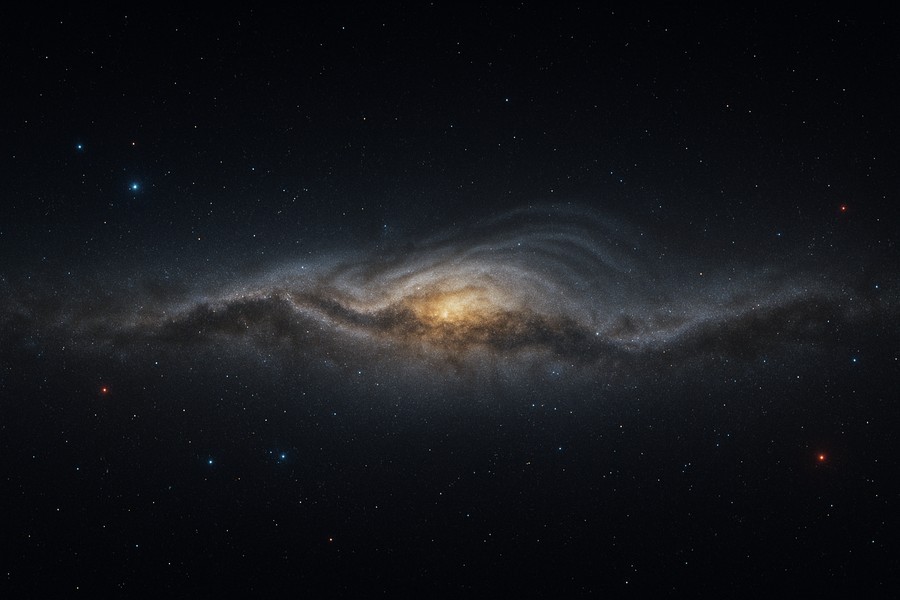
The Milky Way's Giant Ripple
In a breakthrough discovery, it has been observed that our very own Milky Way galaxy has a massive wave emanating from its core. This wave, unseen to the naked eye, is moving stars across vast distances, some as far as tens of thousands of light-years away from the sun. This cosmic wave is similar to the ripples created when a stone is thrown into a pond.
A Moving Galaxy
It has been common knowledge for over a century that the stars in our galaxy are in constant motion, rotating around the center. The Milky Way's disc has been known to be warped since the mid-20th century. Recently, it was discovered that this disc also wobbles, much like a spinning top. Now, evidence of a massive wave stirring the motion of stars in our galaxy has come to light.
Visualizing the Wave
Illustrations of this cosmic wave depict thousands of bright stars highlighted in red and blue, spread out over a large portion of the Milky Way's outer disc. When we view the galaxy from "above" or from a vertical slice, we can see that the left side of the Milky Way curves upward while the right side curves downward. This is due to the warp of the disc. The vast wave is indicated by the red and blue areas, where stars are positioned above and below the disc, respectively.
Mapping the Stars
Despite our inability to travel beyond our galaxy, advancements in technology have enabled scientists to create detailed maps of the Milky Way. These top-down and edge-on maps reveal the extensive stretch of the wave across the galactic disc, affecting stars around 30-65 thousand light-years away from the center. In comparison, the entire Milky Way is about 100 thousand light-years across.
Studying the Wave
Researchers have been studying this fascinating wave-like behavior in the movement of stars within the galactic disc. The wave pattern of vertical motions is slightly shifted horizontally relative to the wave pattern formed by the star's vertical positions. This observed behavior is consistent with what is expected from a wave.
Just imagine watching a stadium wave, where people stand up and sit down in a wave-like pattern. Now, envision that wave frozen in time, much like how we observe the Milky Way. Researchers have been able to track this mysterious movement by studying young giant stars and Cepheid stars, which are types of stars that vary in brightness in a predictable manner. They are visible over large distances by telescopes.
The Mystery of the Galactic Wave
Scientists believe that gas in the disc might also be partaking in this large-scale ripple, as young stars and Cepheids move with the wave. It's possible these youthful stars retain the wave's information from the gas from which they were born. However, the origin of these galactic movements remains a mystery. One theory suggests that a past collision with a dwarf galaxy could be a possible explanation, but further investigation is required.
Further research could also shed light on whether this great wave is related to a smaller-scale rippling motion seen 500 light-years from the sun and extending over 9,000 light-years, known as the Radcliffe Wave. This wave is much smaller and is located in a different part of the galaxy's disc. Whether the two waves are related is a topic for future study.
Conclusion
The discovery of this galactic wave has opened up new areas of research and continues to challenge our understanding of the universe. We are but a small part of a galaxy that is in constant motion, and each new discovery brings us one step closer to understanding the vast cosmos we call home.
